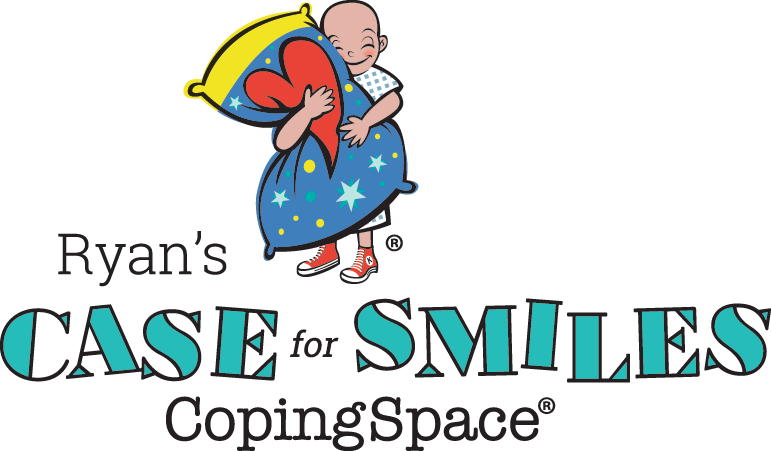BLOG
Survivorship Lessons 42 Years “After” Cancer
By Mariah Forster Olson, Coalition Against Childhood Cancer (CAC2), Survivorship Interest Group Liaison, Secretary
Treatments for childhood cancer can be incredibly brutal and toxic, and have the potential to leave survivors with many different medical conditions or late effects, as well as other challenges that have the potential to last a lifetime. Yet they also can teach valuable survivorship lessons, ones which might help you cope with future challenges and even thrive. I’ve learned this through my own cancer journey over the past 42 years.
My Cancer Journey
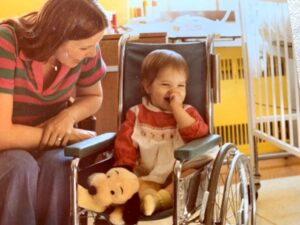 On June 6, 1980, two weeks after my first birthday and after several misdiagnoses, I was diagnosed with neuroblastoma. Neuroblastoma is a type of childhood cancer that consists of a solid tumor originating in nerve cells, and affects mainly infants and young children. My tumor occupied almost the entire right side of my chest and grew out of several levels of my spine. It wrapped around part of my heart, and pushed against my trachea and right lung, making it difficult to breathe.
On June 6, 1980, two weeks after my first birthday and after several misdiagnoses, I was diagnosed with neuroblastoma. Neuroblastoma is a type of childhood cancer that consists of a solid tumor originating in nerve cells, and affects mainly infants and young children. My tumor occupied almost the entire right side of my chest and grew out of several levels of my spine. It wrapped around part of my heart, and pushed against my trachea and right lung, making it difficult to breathe.
At the time I was diagnosed, the severity, location, and advancement of the tumor made my cancer very difficult to treat, and I was given a fairly low chance of survival. Doctors attempted to remove my tumor immediately, but it was too large and intricately involved. After several rounds of radiation treatments, doctors were able to remove most of my tumor. I then required additional radiation for a total of 18 rounds. However, I still needed further treatments and my parents made the agonizing decision to pursue a two-year chemotherapy clinical trial that could raise my odds of survival but had an ominous list of side effects and late effects, including death.
Fortunately by all standards, the treatment was a success. I finished chemotherapy on my third birthday and by the time that I turned 8 years old, after five years with no relapse, I was pronounced cancer-free and labeled a childhood cancer survivor. 42 years later, I am still here!
What is a Cancer Survivor?
The word, survivor, can evoke many definitions and be deeply personal. The Cambridge Dictionary describes a survivor as “a person who is able to continue living his or her life successfully despite experiencing difficulties.” When it comes to childhood cancer survivorship, there can be even more personalization. Some cancer patients identify as a survivor from the time that they are diagnosed, and others do not identify as a survivor until treatments are finished. There are also some cancer patients that reject using the term survivor altogether. Additionally, parents, caregivers, and siblings of a childhood cancer patient can also be identified as survivors. Personally, and in my work with nonprofits, I define cancer survivorship as starting after treatment, but it is perfectly okay to tailor the definition of “survivor’ with whatever feels right to you.
The Late Effects of Childhood Cancer
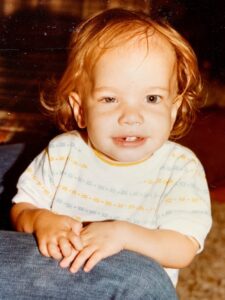 As a childhood cancer survivor from a time when many children did not make it, I am so grateful and blessed to be alive. However there are many challenges that childhood cancer survivors face, and the effects from the cancer and its treatments (as well as other illnesses and injuries) can last a lifetime. These are known as late effects because they can occur many years after treatments have been completed, and can increase in severity as a survivor ages.
As a childhood cancer survivor from a time when many children did not make it, I am so grateful and blessed to be alive. However there are many challenges that childhood cancer survivors face, and the effects from the cancer and its treatments (as well as other illnesses and injuries) can last a lifetime. These are known as late effects because they can occur many years after treatments have been completed, and can increase in severity as a survivor ages.
For example, I have around 100 different diseases, disorders, and other medical conditions. I also have a higher risk for developing nine different types of secondary cancers, and have had 48 surgeries, with most of them being related to my cancer. Furthermore, I have chronic, excruciating neck, back, and cancer scar pain in my muscles, bones, and nerves caused by my tumor and its treatments.
Then, there are the psychosocial late effects that childhood cancer survivors may face, such as depression, post-traumatic stress, and anxiety. They may also experience educational, financial, employment, economic, and healthcare challenges throughout their lives. At each stage of their education, childhood cancer survivors may need and benefit from specific accommodations and the use of an IEP or 504 plan. Furthermore, certain late effects can make it difficult for survivors to have full-time employment, which can lead to financial, employment, and economic challenges. Finally, it is extremely important to make sure that a childhood cancer survivor has quality, adequate health insurance, with a deductible that is practical and achievable on a yearly basis. Treatments, scans and check-ups are often a regular part of a survivor’s life, and healthcare bills can add up.
Childhood Cancer Survivorship Lessons
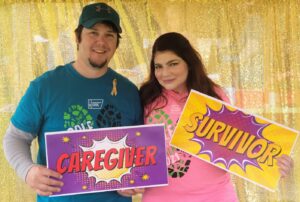 Although survivorship of any kind carries challenges, I believe that my difficult experiences and hardships have taught me valuable lessons. Everyone experiences challenges throughout life, but it is how you respond that is important. You can choose to let it get you down and let it define your life in a negative way. Or, you could use it to learn meaningful lessons, and focus on what you do have in life! You can build resilience to cope with whatever life has in store for you.
Although survivorship of any kind carries challenges, I believe that my difficult experiences and hardships have taught me valuable lessons. Everyone experiences challenges throughout life, but it is how you respond that is important. You can choose to let it get you down and let it define your life in a negative way. Or, you could use it to learn meaningful lessons, and focus on what you do have in life! You can build resilience to cope with whatever life has in store for you.
My life as a childhood cancer survivor has not been easy, but I have learned a few principles and survivorship lessons that have helped me navigate life. I hope that some of these perspectives can enrich your life, too!
Survivorship Lesson 1: Use the Power of Hope, Optimism, and Positivity
As a young child dealing with the challenges of survivorship, my parents liked to extol the virtue of Norman Vincent Peale’s belief in “The Power of Positive Thinking.” Peale, an American minister and author, believed that anyone could prevail over difficulties in life with hope, optimism, and positivity. By altering your perspective from the negative to the positive, Peale believed you could, “change your thoughts…change your world.”
Although you cannot change the fact that survivorship can present complications, you can strive to shift how you think, respond, and deal with them. Even on the most difficult days, there is something positive to be found. Challenge yourself to find that “silver lining” in any situation. It can be something as simple as a kind word or a smile. Or maybe it is learning about how much you are loved and supported by those around you.
Injecting humor into life can make it a little easier to achieve hope, optimism, and positivity. Laughter and humor have multiple benefits, and the act of laughter itself can help relax the body and combat the physical symptoms of stress. Not only does it feel good to laugh, but it is also important for you to do!
Survivorship Lesson 2: Lean on Faith
I have found that I need my faith and religious beliefs to help me through the difficult moments of life. Believing in and praying to a higher power provides my anxious, worrying mind with a sense of calm and peace. It is very comforting to know that I am never alone and there is someone guiding me through the twists and turns of life.
While these may not be your beliefs, I wholeheartedly believe that any type of faith can assist in dealing with difficult and challenging moments. Try spending some time thinking about what you believe in, whether it be a higher power, universal purpose, or formal religion. Then, start practicing prayer, meditation, or something similar that can help build your faith and provide a soothing, calming effect. You could also explore your faith further and seek guidance by speaking with a pastor, priest, or some other type of faith-based leader.
Survivorship Lesson 3: Find Your “Inner Circle”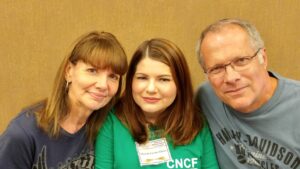
It is so important to identify at least one person in your life that you can talk to and truly be yourself. My “inner circle” consists of the people that are closest to me, including my husband, parents, brother, best friend, and my therapy cat. These are the people I can talk to about anything. They love me unconditionally and support me physically and mentally. I am so blessed to have them in my life.
Talking to someone can help put issues into perspective, whether that person simply listens and silently offers support, or they provide advice. More importantly, it also allows you to take care of yourself and your mental health by getting your thoughts out and not feeling so alone. Make a list of people in your life that you trust and feel you can talk to and be yourself. This list might consist of family members, friends, a religious leader, a teacher, or a mental health professional. Then keep that list handy for difficult times, or just check in regularly to help you cope and thrive.
Survivorship Lesson 4: Give Back and Help Others
Although I cannot work a “conventional” job, I still strive to be productive and give back to the childhood cancer community. Giving back and helping others is so important, and my nonprofit work provides me with purpose. It allows me to use my knowledge and experiences to fulfill my life goal of fighting childhood cancer of all types and helping patients, survivors, and their families feel less isolated and alone. Most of all, this work helps me take the focus off my own life, and off my medical issues and constant, severe pain. There are many different ways that you can give back and volunteer, whether you have a lot of time to donate or just a small amount. Currently, a lot of nonprofit work can be done virtually, at any time of the day or night, and most organizations are more than willing to work with you to find something that fits.
 Depending on the type of nonprofit work that you want to do, there are a variety of jobs available. For childhood cancer nonprofit organizations, it may be as simple as bringing attention to the different social media platforms; wearing gold, the color of childhood cancer, when you are out in public; or hosting a Facebook fundraiser for your birthday. Even if you are overwhelmed by treatment, or you frequent hospitals more than your own home, there are small ways that you can help.
Depending on the type of nonprofit work that you want to do, there are a variety of jobs available. For childhood cancer nonprofit organizations, it may be as simple as bringing attention to the different social media platforms; wearing gold, the color of childhood cancer, when you are out in public; or hosting a Facebook fundraiser for your birthday. Even if you are overwhelmed by treatment, or you frequent hospitals more than your own home, there are small ways that you can help.
Once you have more time to donate, there is an even wider variety of ways to give back, and the work can be quite addicting! I started my nonprofit work by contacting a neuroblastoma nonprofit organization, the Neuroblastoma Children’s Cancer Society (NCCS) and asking them if I could volunteer in some way. Now, my work has grown into working with multiple organizations!
To get started, think about your skills and interests, and what causes you are passionate about. It can be the illness or injury that impacts you, or something more universal like animals, the environment or social justice. Then, research nonprofit organizations aligned with that cause. Many have volunteer pages on their websites, contact forms or email addresses to help you get involved.
Growing Through Survivorship
As you can see, the definition of survivor can be deeply personal and individualized, and the journey can be both happy and difficult. My life as a childhood cancer survivor, just shy of celebrating 42 years from my diagnosis, has taught me incredible lessons. I hope that these can help enrich your life, whatever your diagnosis and wherever you are on your journey, too.
**Statements on this blog reflect the author’s personal opinion and do not represent the views of Ryan’s Case for Smiles. They are also not to be viewed as personal medical advice, but rather for the purpose of general knowledge. The reader should speak to their healthcare team, or their child’s, for medical advice.**
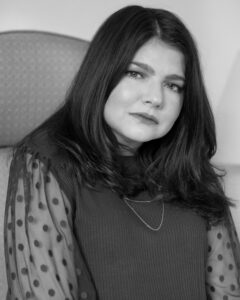 About the Author: Mariah Forster Olson was diagnosed with neuroblastoma in 1980 at the age of one. At that time, there were very few treatment options, but Mariah had all of them, including a two-year chemotherapy clinical trial, radiation, and multiple surgeries. Outdated therapeutics and the location of her tumor left Mariah with around 100 different medical conditions and late effects. She has also had 48 surgeries and is at a higher risk for 9 different secondary cancers. Yet, Mariah strives to focus on hope, optimism, and positivity and how she can use her experiences to help childhood cancer patients, survivors, and their families. Mariah received a Bachelor’s degree in political science and a Master’s in business administration from the University of Wisconsin-La Crosse. She lives in La Crosse, Wisconsin with her husband, Troy, and their Siamese cat, Isaac.
About the Author: Mariah Forster Olson was diagnosed with neuroblastoma in 1980 at the age of one. At that time, there were very few treatment options, but Mariah had all of them, including a two-year chemotherapy clinical trial, radiation, and multiple surgeries. Outdated therapeutics and the location of her tumor left Mariah with around 100 different medical conditions and late effects. She has also had 48 surgeries and is at a higher risk for 9 different secondary cancers. Yet, Mariah strives to focus on hope, optimism, and positivity and how she can use her experiences to help childhood cancer patients, survivors, and their families. Mariah received a Bachelor’s degree in political science and a Master’s in business administration from the University of Wisconsin-La Crosse. She lives in La Crosse, Wisconsin with her husband, Troy, and their Siamese cat, Isaac.
Due to Mariah’s medical issues, she does not have a “conventional” job; however, she works with and for 10 different cancer nonprofits, is writing a book about her life, and plays the oboe professionally. Mariah is the Survivorship Interest Group Liaison and the Secretary for the Board of Directors and Executive Committee for the Coalition Against Childhood Cancer (CAC2). She also is the Survivor, Family, and Resource Director for the Neuroblastoma Children’s Cancer Society (NCCS), and she serves on the first American Cancer Society’s Gold Together Advisory Council. Finally, Mariah is on the survivorship committee for PREP4Gold, and regularly advocates with the American Cancer Society Cancer Action Network (ACS CAN). Mariah’s work fulfills her and gives her a sense of purpose, and she truly hopes to help others and provide hope, understanding, support, and encouragement for childhood cancer patients, survivors, and their families.
